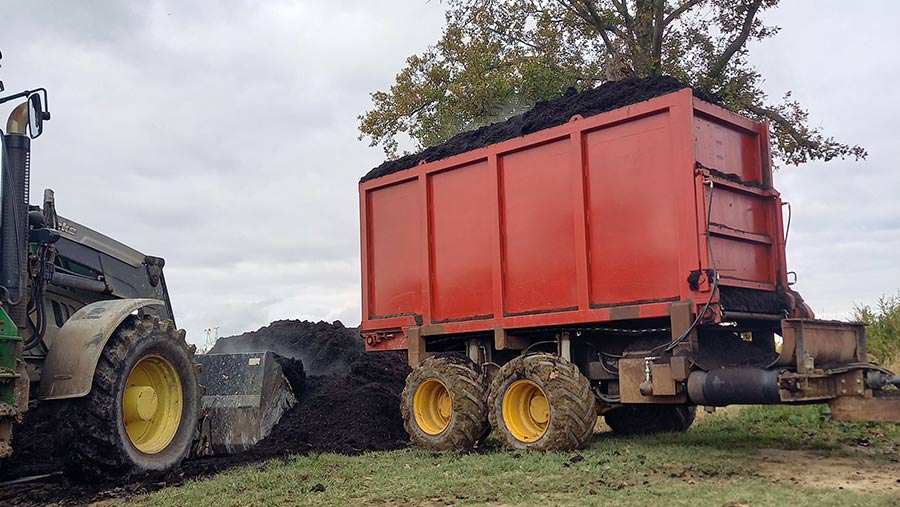FW Inventions Comp 2022: Richard Moon’s spreader with driven axles
 © Richard Moon
© Richard Moon Richard Moon’s spreader with driven axles is runner-up in the complex category of our Farmers Weekly Inventions Competition 2022.
Applying large quantities of fertiliser, lime and farmyard manure along the narrow rows of orchards and vineyards around the Kent coast led contractor Richard Moon to develop his own twin-axle spreader.
Having already manufactured custom narrow bodies for a conventional trailer undercarriage, he decided to go several steps further by building a bespoke chassis with four-wheel drive and steer, plus the ability to level the body when working across sloping ground.
The starting point was to track down a pair of axles with a track width suitably narrow for the orchards in which they were to work.
These came from an old JCB 520-40 loader and, at well over £1,000 each, accounted for a good chunk of the £10,000 total build cost.
See also: Options for fitting driven axles to farm trailers for winter conditions
Propulsion comes by way of the tractor’s 540eco pto, which runs a hydraulic pump with a 150-litre/min output positioned at the front of the trailer.
The oil from this is used to power all of the chassis functions, including a drive motor on each axle.
These are controlled using solenoids, with one switch in the cab used to flick between forward and reverse, and another, linked to a flow control valve, altering the speed.
It’s also possible to disconnect the drive and freewheel when the extra traction isn’t required.
To do this, Mr Moon cobbled together his own version of an electrically operated dog clutch, which is fitted between the axles and motors.
Another switch in the tractor cab controls the levelling rams that can jack up the spreader body by 200mm when working across a slope.
Added to that, each axle can be steered. He tends to engage rear-axle steering for headland turns on relatively flat terrain with no traction problems, but crab steer comes in useful to avoid sliding down hillsides.
Mr Moon had already built two narrow spreader bodies – one with a conveyor in the bottom that feeds rear spinning discs for lime and fertiliser, and a second orientated back-to-front with a side-discharge conveyor for manure.

